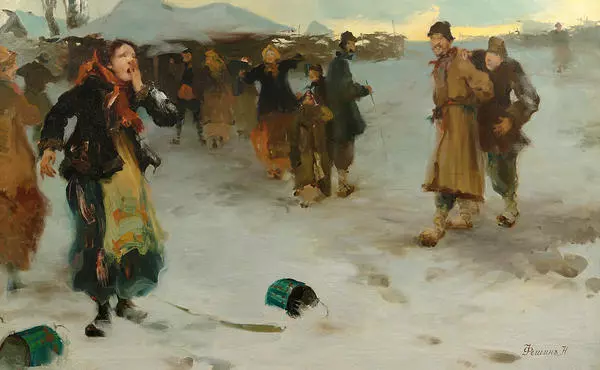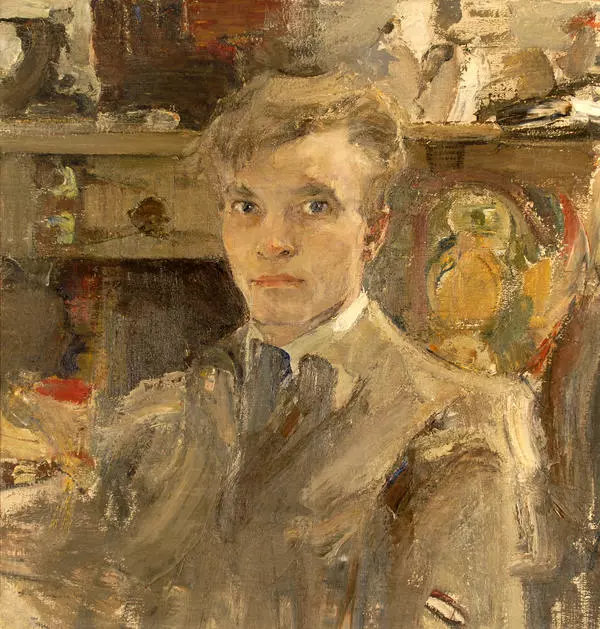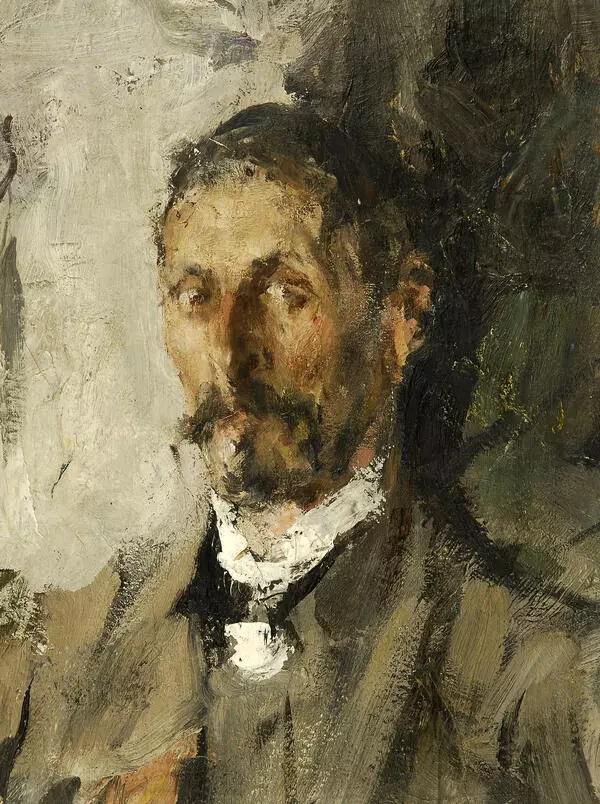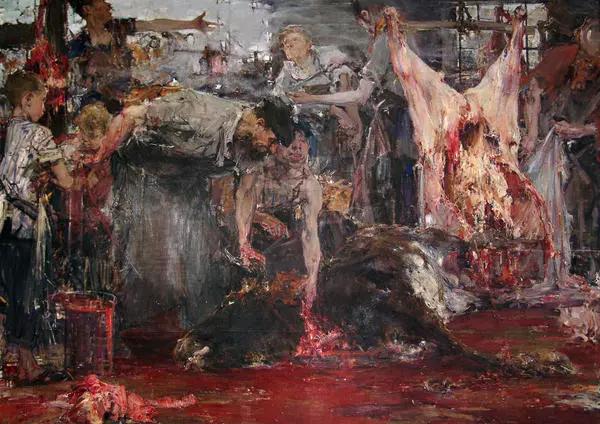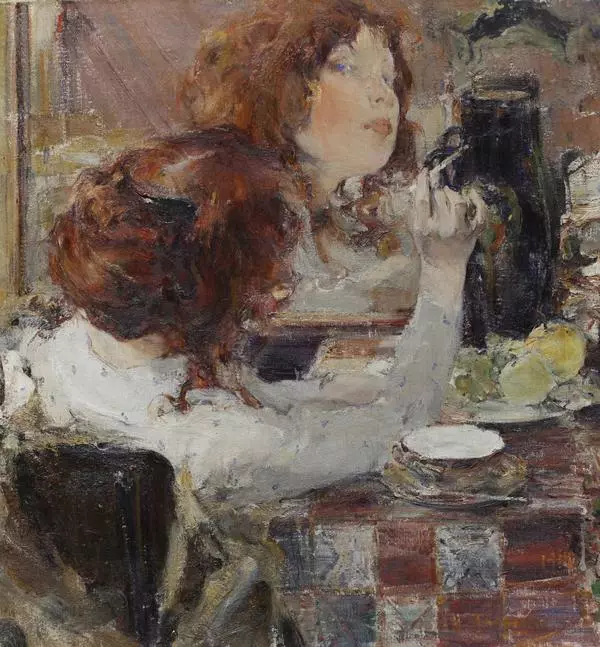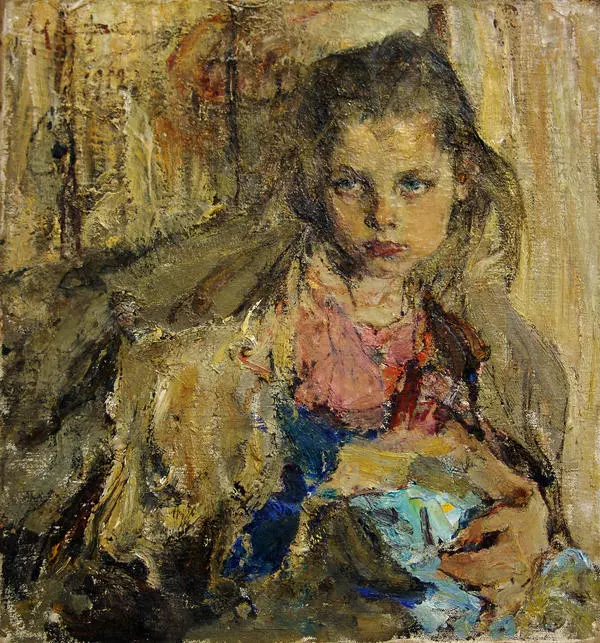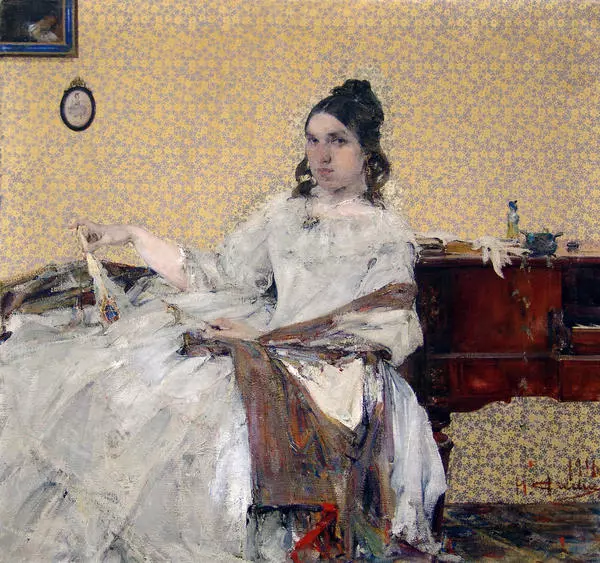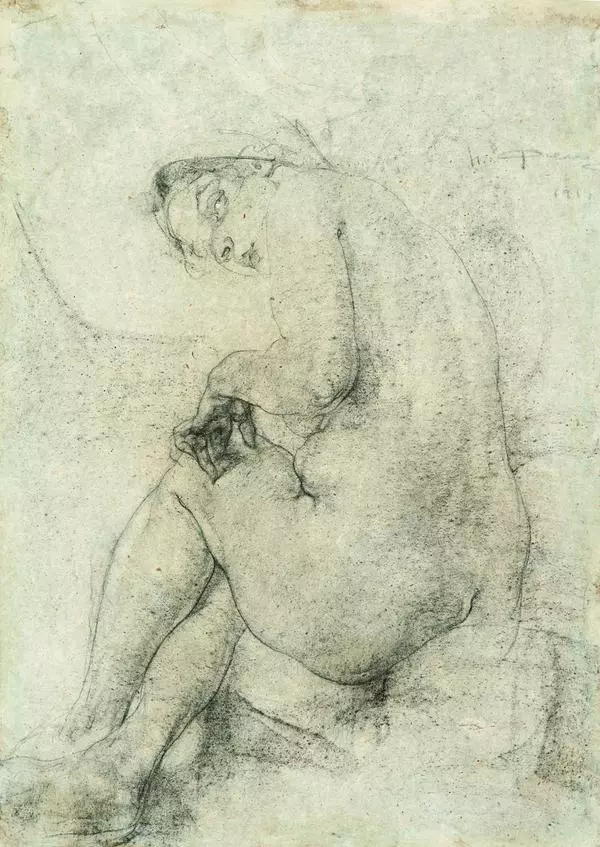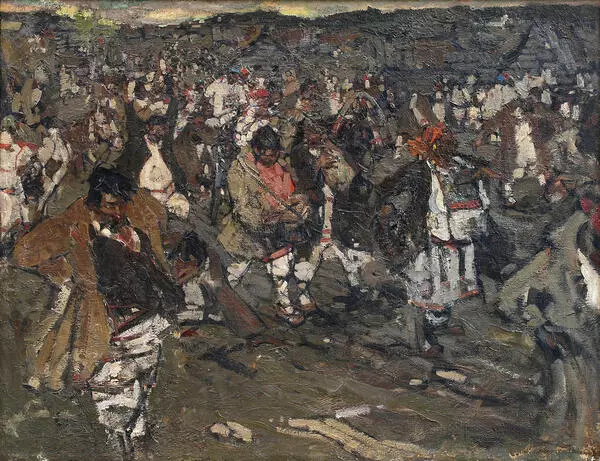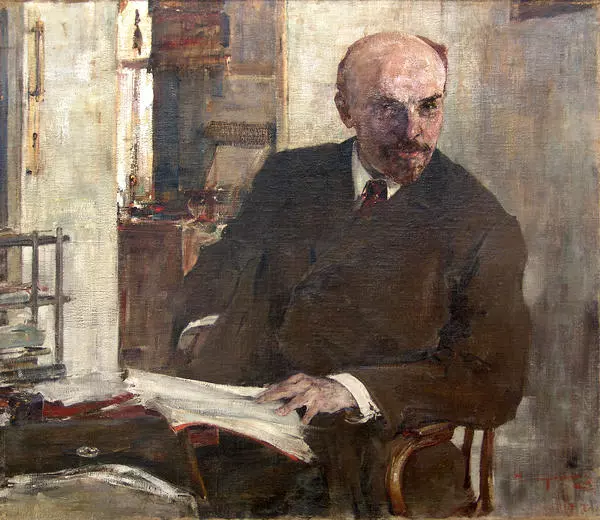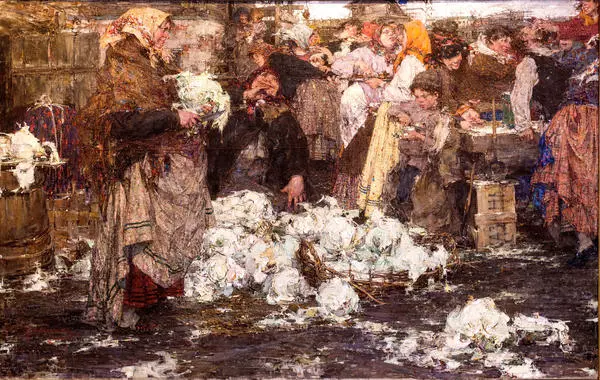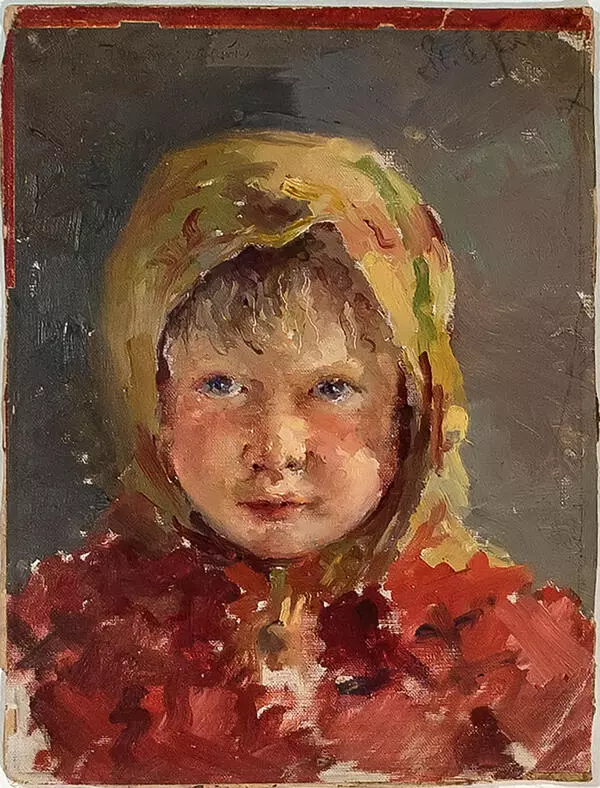The portrait by Nikolai Ivanovich Fechin, an artist and teacher of the Kazan Art School, shows his student Maria Bystrova. She studied at the art school from 1914 to 1917, and from 1930 worked at the Moscow institute “Proektstalkonstruktsiya”.
Maria Bystrova herself recalled how the portrait was created. She came to the studio at Fechin’s invitation, together with Tamara Popova, another student of the artist. Nikolai Ivanovich gave Maria Bystrova a sharp and penetrating glance and, after a short conversation, invited her to sit down. He took a sheet of paper and made a quick little sketch in charcoal. Then he offered her to sit for the portrait, scheduled the day and requested only that her costume was not blue. The student came to the studio at the agreed time. A canvas for the portrait was stretched on the easel, paints and brushes were placed next to it. Maria was wearing a white blouse with a red ribbon in her hair. Fechin invited her to sit on the sofa, with a huge rug behind it, gave her a book in her hands, and asked her to lower her head slightly and look at him.
Nikolai Fechin worked on the portrait quickly and passionately. After each session, the artist took the portrait away and did not show it to the sitter until the work was finished. Maria Bystrova, who observed the painter’s work, recalled that she felt an extraordinary creative power in him and it seemed that his insightful and deep eyes saw what others did not see.
When the sessions were over, Fechin, satisfied with his work, finally showed the portrait to his student.
The artist depicted the student in a relaxed pose sitting on a sofa and leaning slightly on a cushion. Maria’s hands hold a book, yet, by the artist’s design, her gaze at the viewer. Nikolai Ivanovich completed the image with black curls tied with a scarlet ribbon. The red tones are reinforced by Maria Bystrova’s scarlet lips, as well as the pattern on the carpet behind the girl, which serves as a background. The face is painted in peach hues.
The portrait was purchased by the artist and public
figure Alexander Grigoriev in 1923. The work was exhibited in 1963–1965 in
Moscow, Leningrad, Kazan, Kiev and Riga, and in 1976 in the USA.







